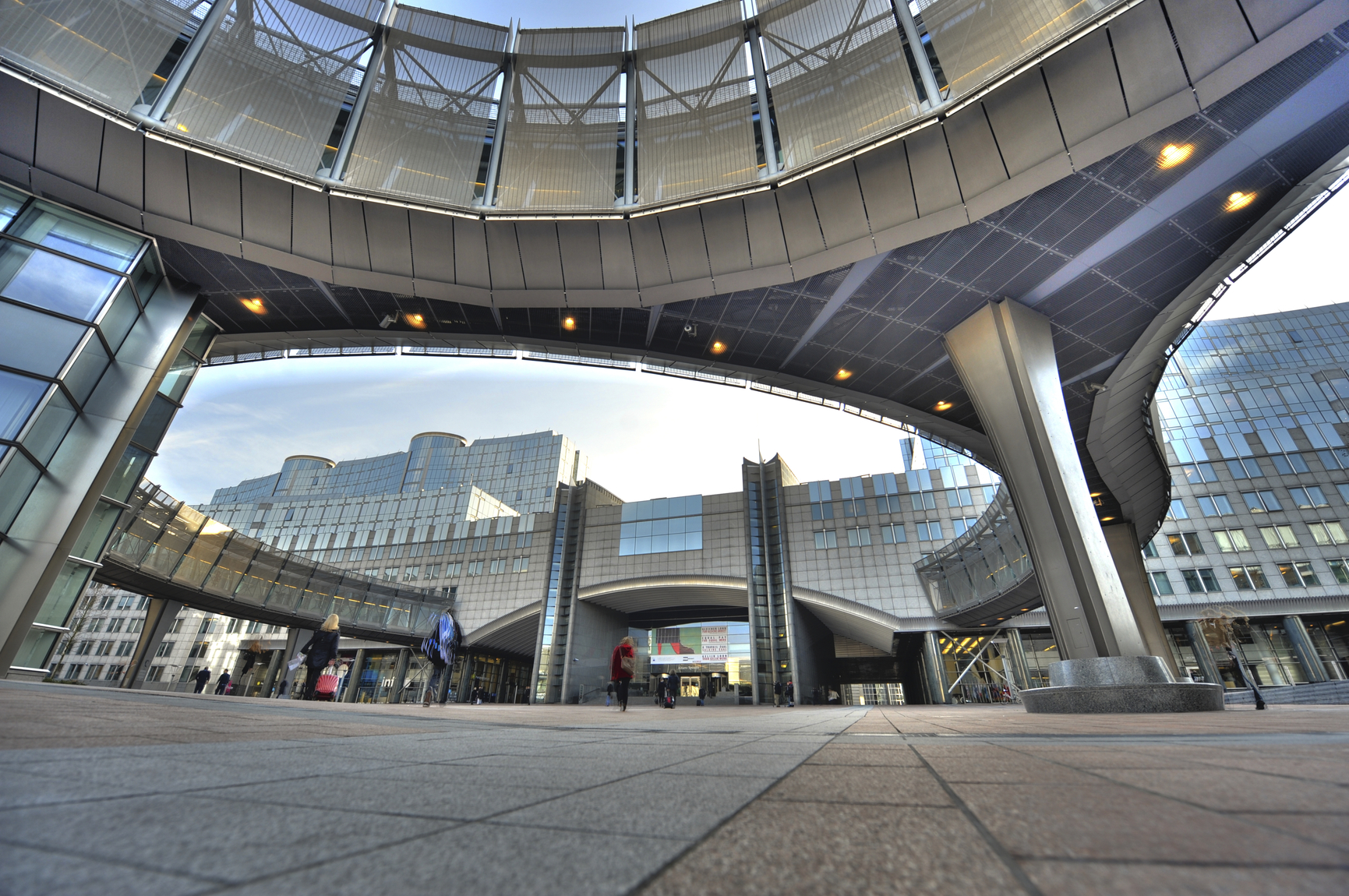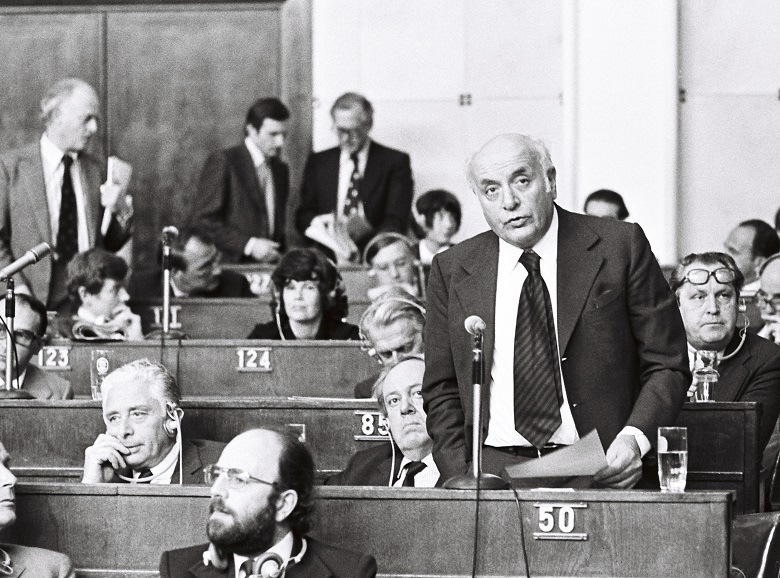 EP buildings in Brussels - Spinelli building © European Union 2011 - Source: Architect: AEL
EP buildings in Brussels - Spinelli building © European Union 2011 - Source: Architect: AEL
Altiero Spinelli fought tirelessly for a federal European Union
The Altiero Spinelli building, which was completed in 1998, is now a familiar Brussels landmark. But how much do you really know about the man who gave his name to one of the main Parliament buildings in this European capital? For example, did you know that the young Altiero Spinelli spent ten years in prison and a further six long years in confinement? If not, it's time to read up about him here...
The Ventotene Manifesto
Altiero Spinelli was born on 31 August 1907 in Rome into a family of socialists. He was drawn to politics at an early age and joined the Italian Communist Party. This led to his arrest in June 1927 on charges carrying a jail sentence of 16 years and eight months. He used his time in prison to study politics in depth. Disillusioned with the party for which he had been arrested and abhorring Stalinist totalitarianism, he turned his back on his previous affiliations to espouse the federalist cause.
It was while he was under house arrest on the small island of Ventotene located in the Tyrrhenian Sea, that his federalist ideas took shape. He reasoned that nothing could be as effective as a broad European federalist movement to stem the destructive forces of nationalism. Inspired by the theories of British constitutional federalists, he and other political prisoners decided to draw up a manifesto setting out a vision for the future of a free and united Europe. Indeed this was one of the first documents advocating a federal constitution for Europe.
At a time when the continent appeared to be in the throes of fascist and nationalist sentiment, the Ventotene Manifesto advocated a supranational European federation of states, whose main objective was to place limits on national sovereignty and create unity among Europeans, making war impossible.
Altiero Spinelli was finally released in 1943. That same year, he put his ideas into action with the creation of the European Federalist Movement (Movimento Federalista Europeo). He also made contact with various resistance movements in favour of European unification. In 1946, he became a leading light in the European Union of Federalists. This innovative thinker, whose ideas had clearly taken shape in prison, is now regarded as a founding father of Europe.
 Commissioner Altiero Spinelli at the plenary session in Strasbourg, May 1976 © European Communities 1976 – European Parliament
Commissioner Altiero Spinelli at the plenary session in Strasbourg, May 1976 © European Communities 1976 – European Parliament
The Spinelli Plan
Having been first a European Commissioner between 1970 and 1976 and then a Communist Member of the Italian Parliament while also a designated Member of the European Parliament since 1976, Altiero Spinelli was elected in 1979 to the European Parliament. In this capacity, he sought to convey his federalist ideas. As the rapporteur of the Committee tasked with the institutional reform of the European Communities, what he wanted was a new European treaty or constitution. On 14 February 1984, his ‘Draft Treaty Establishing the European Union’ was adopted by an overwhelming majority and received the public endorsement of French President François Mitterrand. This instrument, today known as the ‘Spinelli Plan’, sought to establish a political union. It served as a basis for the Single European Act of 1986, which opened up national borders to create a common market, and for the 1992 Treaty of Maastricht establishing the European Union.
Altiero Spinelli remained a Member of the European Parliament until his death in May 1986.
On 14 July 1999, three post-modernist European Parliament buildings were inaugurated by its Spanish President, José-Maria Gil-Robles Gil-Delgado. The main building was named after Altiero Spinelli and the two others after Bertha von Suttner and Paul-Henri Spaak respectively.
 EP buildings in Brussels - Spinelli building © European Union 2014 - Source: Architect: AEL
EP buildings in Brussels - Spinelli building © European Union 2014 - Source: Architect: AEL